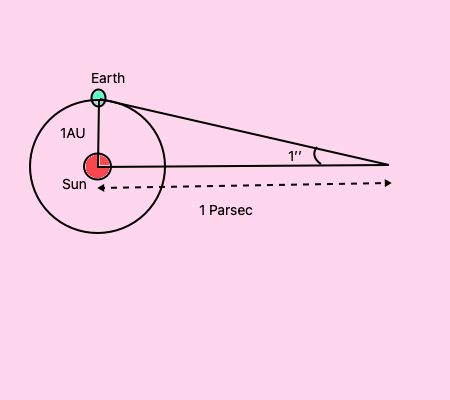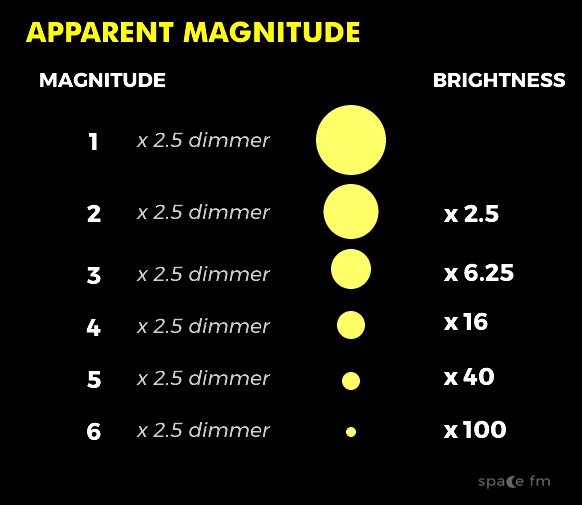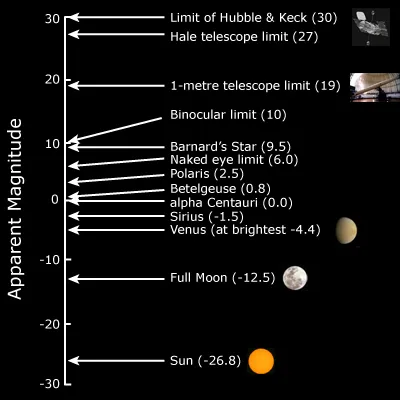the unit of measurement of the brightness of a celestial object
However, there is the apparent magnitude (m), which is the brightness observed from here, from the surface of the Earth (ignoring the atmosphere) and there is the absolute magnitude (M). For absolute magnitude, we need to know some basic astronomical distance measurement concepts and definitions.
We won’t dive into that deeply, there are some great materials in the ether. =)
Astronomical unit – AU: 1 astronomical unit is the average distance between the Sun and the Earth.
1 AU = 149,597,870,700 m
This is only 8.3167 light minutes. 1 light year 63,241 AU…
Parsec/pc –
How far away would two given objects have to be viewed perpendicularly so that the distance between them would be 1 AU, so that they would subtend an angle of only 1 arcsecond (1° 3600 – ad).
1 parsec – 3,258 light year
10 parsec – 32,58 light year
How and from where?
Hipparchus (c. 160 BC – c. 125 BC) was an ancient Greek astronomer who classified the stars that were then only visible to the naked eye into 6 orders based on their brightness. Visibility, or brightness, decreased as the number increased.
Galileo Galilei (February 15, 1564 – January 8, 1642) was the first to point his telescope at the sky (you can read about it HERE), expanding the scale to 7 using the telescope.
This scale was expanded and refined by the English astronomer Norman Robert Pogson (1829 – 1891) in the late 1850s, and then by the German physicist and astronomer Johann Karl Friedrich Zöllner (1834 – 1882) in the early 1860s.
The scale used today, which also extends into minus and the decimal point was introduced, was based on their work. The multiplier between 1 and 1 units of apparent magnitude is: x2.5
Examples of apparent magnitude
Vega in the constellation Lyra has a magnitude of 0, or the brightest star in the night sky, while the Pole Star in Ursa Minor has a magnitude of 2, while our Sun has a magnitude of 26.7, our celestial companion at full moon, and the Moon has a magnitude of -12.7.
The Pleiades, or the Pleiades, have a magnitude of 1.7, the Orion Nebula has a magnitude of 4, and the Andromeda galaxy has a magnitude of 21.5.
Mars has a magnitude between -2.9 and +1.8, and Venus has a magnitude between -4.5 and -3.9.
The absolute brightness of our Sun is only +4.83.
Apparent magnitude (m) is used on star maps. That’s why it’s important to be clear about what we want to see in the night sky with a telescope.
Be a Nerdy Bird!


